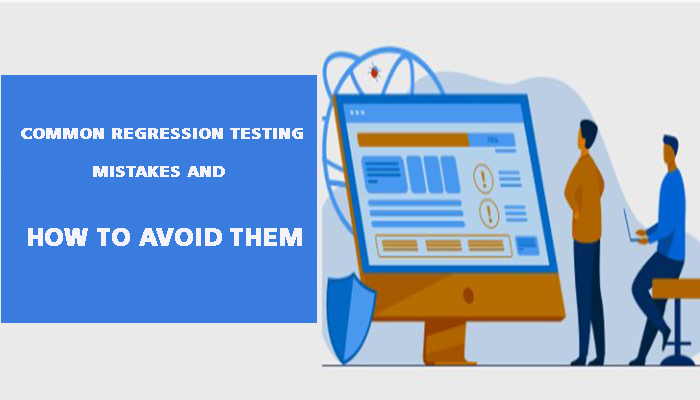Regression testing is a crucial step in software testing that ensures the application or system is working as expected after any changes or updates. However, even experienced testers can make mistakes while performing regression testing, which can result in serious issues and delays in the software release. In this article, we will discuss the top 5 common regression testing mistakes and how to avoid them. From overlooking test cases to failing to analyze test results, these mistakes can be easily avoided with proper planning, communication, and attention to detail. By understanding the potential pitfalls and implementing effective testing strategies, you can ensure that your software is high-quality, reliable, and meets the expectations of your users. So, let’s dive into the common regression testing mistakes and learn how to avoid them to ensure a successful software release.

Table of Contents
What is regression testing and why is it important?
Regression testing is the process of testing the entire software system to ensure that changes or updates have not introduced any new bugs or issues. It is essential to perform regression testing to ensure that the software is functioning correctly and meets the expectations of the users. Regression testing is critical because it helps identify any issues that may arise due to changes made to the software. It helps ensure that the software is stable and reliable, and that it meets the quality standards of the organization.
Common regression testing mistakes
Mistake #1: Not testing all scenarios
One of the most common regression testing mistakes is not testing all the scenarios. Testers often overlook some of the test cases that may be impacted by the changes made to the software. This mistake can result in serious issues that can affect the overall quality of the software. It is essential to ensure that all test cases are executed during regression testing to ensure that no issues are missed.
Mistake #2: Not automating regression testing
Another common mistake is not automating regression testing. Manual testing can be time-consuming and prone to errors. Automating regression testing helps save time and ensures that all test cases are executed accurately. Automation also helps identify any issues that may arise due to changes made to the software, making it easier to fix them before the software is released.
Mistake #3: Not prioritizing tests
Another common mistake is not prioritizing tests. Testers often focus on executing all the test cases without considering their significance. It is essential to prioritize the test cases based on their importance to the software. This helps ensure that critical areas of the software are tested thoroughly, and any issues are identified and resolved before release.
Mistake #4: Not tracking changes properly
Another common mistake is not tracking changes properly. It is essential to keep track of all changes made to the software and ensure that they are tested thoroughly during regression testing. Failure to track changes can result in issues that may not be identified until after the software is released, causing delays and additional costs.
Mistake #5: Not involving the right team members
Another common mistake is not involving the right team members in the regression testing process. It is essential to have the right team members involved in the testing process to ensure that all aspects of the software are tested. This includes developers, testers, and other stakeholders who may have insights into the software and its functionality.
How to avoid regression testing mistakes
To avoid regression testing mistakes, it is essential to have a well-planned and executed testing strategy. Here are some tips to help you avoid regression testing mistakes:
- Develop a comprehensive test plan that includes all test cases and prioritizes them based on their importance to the software.
- Automate regression testing to save time and ensure accurate test results.
- Track all changes made to the software and ensure that they are tested thoroughly during regression testing.
- Involve the right team members in the testing process to ensure that all aspects of the software are tested.
- Use regression testing tools to simplify the testing process and identify any issues that may arise due to changes made to the software.
Regression testing best practices
To ensure successful regression testing, here are some best practices that you can follow:
- Perform regression testing after every change or update to the software.
- Develop a regression testing suite that includes all test cases.
- Prioritize the test cases based on their importance to the software.
- Automate regression testing to save time and ensure accurate test results.
- Track all changes made to the software and ensure that they are tested thoroughly during regression testing.
- Involve the right team members in the testing process to ensure that all aspects of the software are tested.
- Use regression testing tools to simplify the testing process and identify any issues that may arise due to changes made to the software.
Conclusion
Regression testing is a critical aspect of software testing that ensures that the software is stable, reliable, and meets the expectations of the users. However, even experienced testers can make mistakes while performing regression testing, which can result in serious issues and delays in the software release. By understanding the potential pitfalls and implementing effective testing strategies, you can ensure that your software is of high quality, reliable, and meets the expectations of your users. Following the best practices for regression testing can help you avoid common mistakes and ensure a successful software release.
Follow – https://lifefitnesstricks.com for More Updates